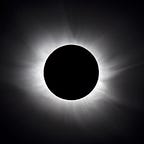How to visit Chile’s giant telescopes in July 2019
Credit: CTIO
There are several world-class observatories in the Path of Totality
Any astronomer worth their salt is going to want to visit — or at least see from a distance — the giant telescopes of the European Southern Observatory (ESO) in the cerro (mountains) of northern Chile’s Atacama desert (though there are others not aligned to the ESO).
Travel to Chile for a Total Solar Eclipse with WhenIsTheNextEclipse.com!
However, it’s important to realise not only that they are in one of the driest, highest and most remote areas of the world (so they can take advantage of the darkest night skies on the planet), but also that there are three separate ESO sites in Chile. Only one — La Silla — is in the path of the eclipse, and the Cerro Tololo Inter-American Observatory (CTIO) in the Elqui Valley is actually the best placed for a long Totality.
1 — ESO La Silla Observatory, Cerro La Silla (Totality)
Organise a visit (Saturdays at 14:00)
An iconic observatory in the Path of Totality? It’s mouth-watering stuff, and the ESO confirmed to me in 2017 that it will be staging events, but that further details would be announced closer to the time (so keep an eye on the ESO website).
About 600 km north of Santiago and about 160 km north of La Serena, La Silla Observatory sits at an altitude of 2,400m (7,900 ft) at the southern tip of the Atacama Desert. Operating since the 1960s, its 3.6m Cassegrain telescope hosts HARPS (High Accuracy Radial velocity Planet Searcher), a spectrograph for hunting exoplanets. Tours also include the New Technology Telescope (NTT), a 3.58-metre Richey-Chretien telescope and precursor to the VLT at Paranal. Also on site is the Belgian robotic TRAPPIST (TRAnsiting Planets and PlanetesImals Small Telescope–South, a modest 0.60m telescope that discovered the TRAPPIST-1 system of seven Earth-like planets.
La Silla Observatory is a two-hour drive north along the Panamericana Norte/Ruta 5 from La Serena, and completely separate from the tourist area of the Elqui Valley.
When is Totality at La Silla Observatory?
July 2, 2019 at 16:39pm (1 minute 48 seconds)
2 — National Optical Astronomy Observatory, Cerro Tololo Inter-American Observatory (CTIO) (Totality)
Organise a visit (Saturdays at 09:00 and 13:00)
Part of the AURA Observatory in Chile — and not a member of the European Southern Observatory — CTIO is about 80 km east of La Serena near Vicuña in the Elqui Valley at an altitude of 2,200m. The CTIO complex is part of the U.S. National Optical Astronomy Observatory (NOAO) and the Kitt Peak National Observatory (KPNO) in Tucson, Arizona. The principal telescopes on site are the 4-m Victor M. Blanco Telescope and the 4.1-m Southern Astrophysical Research (SOAR). One of the two 8-m telescopes comprising the Gemini Observatory is co-located with CTIO on AURA property in Chile, together with more than 10 other telescopes and astronomical projects.
When is Totality at CTIO?
July 2, 2019 at 16:38pm (2 minutes 11 seconds)
3 — ESO Paranal Observatory, Cerro Paranal (86% partial eclipse)
Organise a visit (Saturdays at 10:00 and 14:00)
This is not an option for a Totality on July 2, 2019, but it would make an awesome side-trip before or after the eclipse. The biggest reason to visit Paranal, 2,635 m (8,645 ft) up in the Atacama dessert, is to see the Very Large Telescope array (VLT), the world’s most advanced optical instrument, active since 1998. It consists of a four 8.2m diameter Ritchey-Chrétien reflector telescopes and four movable 1.8m diameter Auxiliary Telescopes. Also here are the Visible and Infrared Survey Telescope for Astronomy (VISTA) and the VLT Survey Telescope (VST), the world’s most powerful dedicated imaging survey telescopes. The ESO is also constructing the Extremely Large Telescope (ELT) at Cerro Armazones, near Paranal.
Note that Paranal Observatory — arguably THE observatory to visit while in Chile — is a whopping eight hours drive north on the Panamericana Norte/Ruta 5 from La Serena, the main town in the eclipse path. So it’s best to fly to nearby Antofagasta from La Serena or Chile’s capital, Santiago.
4 — The ALMA radio telescopes, Chajnantor Plateau, San Pedro de Atacama (76% partial eclipse)
Organise a visit (Saturdays & Sundays)
The ALMA (Atacama Large Millimeter/submillimeter Array at Chajnantor may be the furthest observatory from the eclipse path, but arguably it’s a must-see. Its 66 high precision antennas on the Chajnantor Plateau (at an altitude of 4576 to 5044m) together make one single radio telescope, and it’s at one of the highest and driest astronomical observatory sites on Earth. You can visit the ALMA Operations Support Facility, home of the control room and see antennas under maintenance (but the 66 active ‘scopes are out of bounds). It’s about 90 minutes drive from the Atacama desert’s main tourism town, San Pedro de Atacama.
An astronomical interferometer of radio telescopes, ALMA is physically the largest astronomical project in existence, and its antenna can be arranged in different configurations to zoom-in on the Universe. More powerful than the Hubble Space telescope, it’s used to study molecular gas and dust, the so-called ‘cool Universe’.
PS: Thanks for taking the time out to read my post! If you like my blog, please …
1) Leave a comment or press ❤ to recommend it
2) Share it with your network
3) Follow me for future posts (@thenexteclipse)
5) Spend a few dollars on one of my USA eclipse travel guides
6) Visit www.WhenIsTheNextEclipse.com
